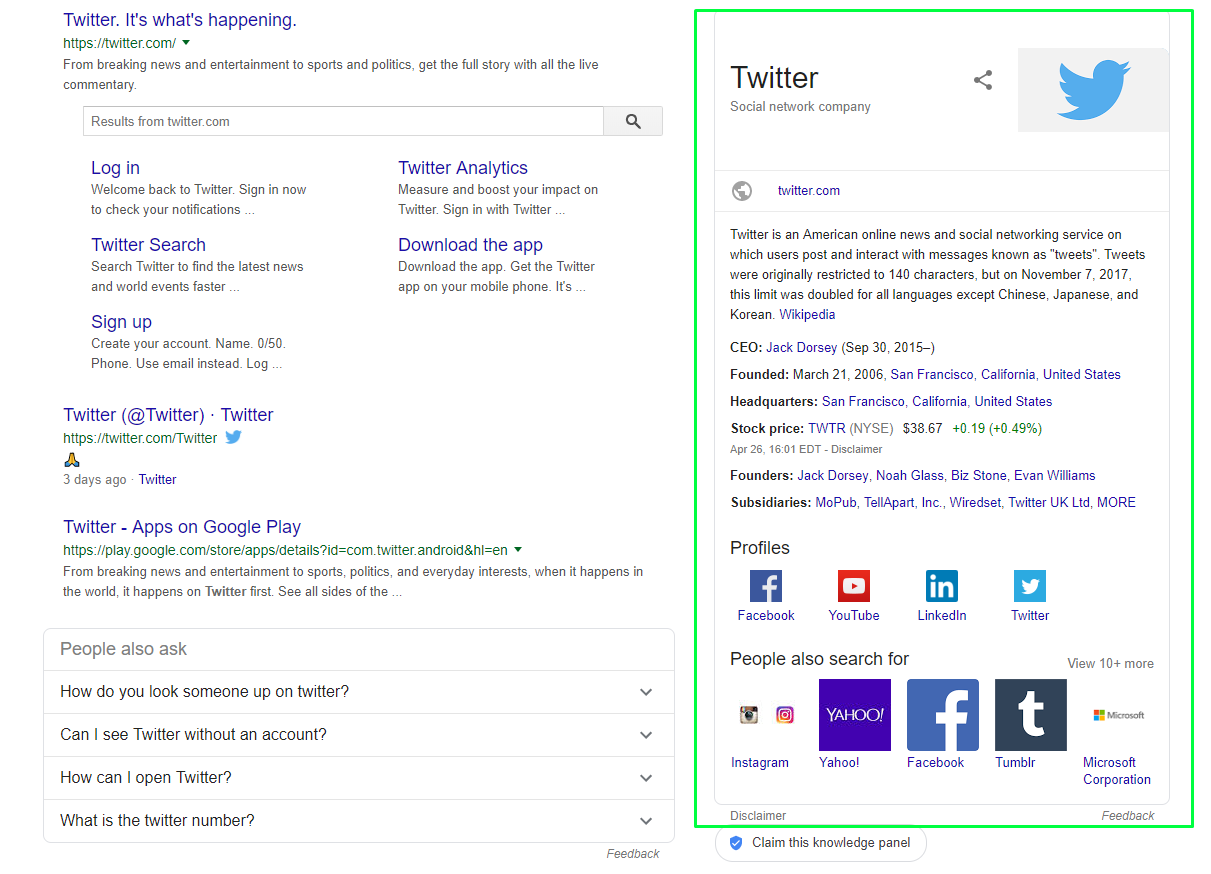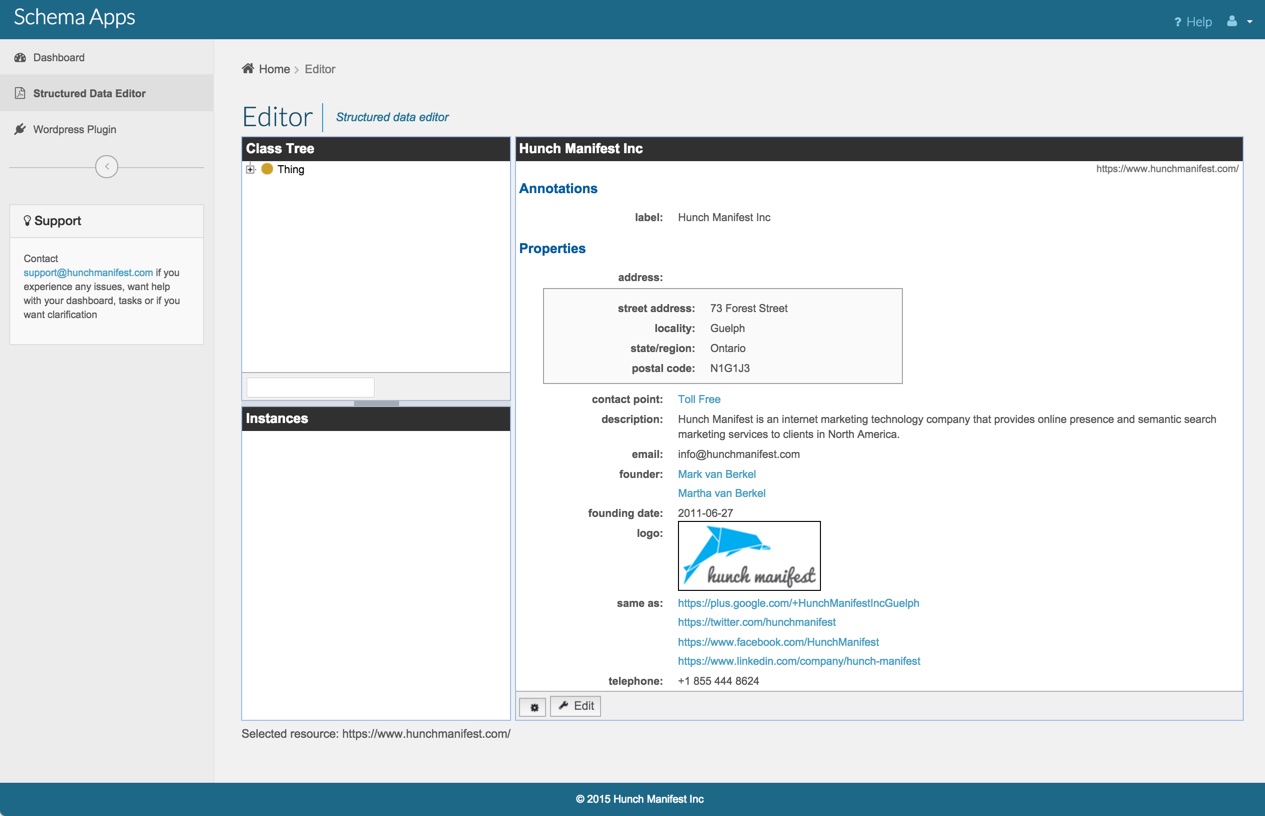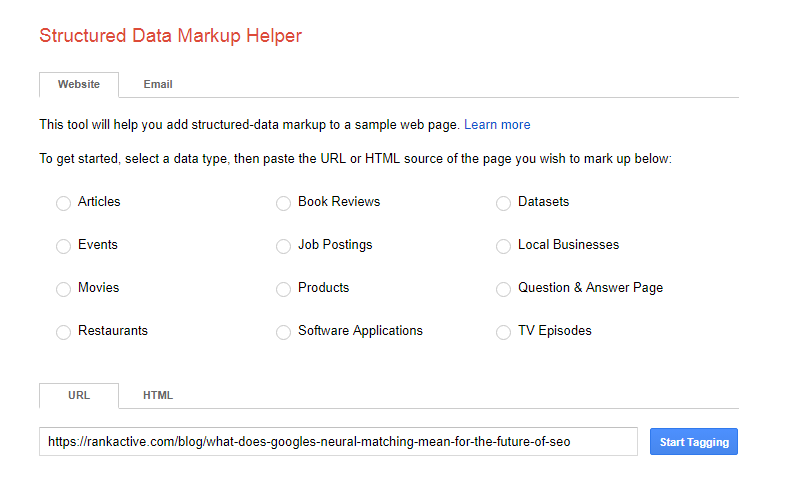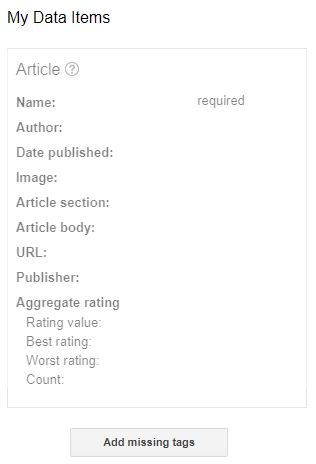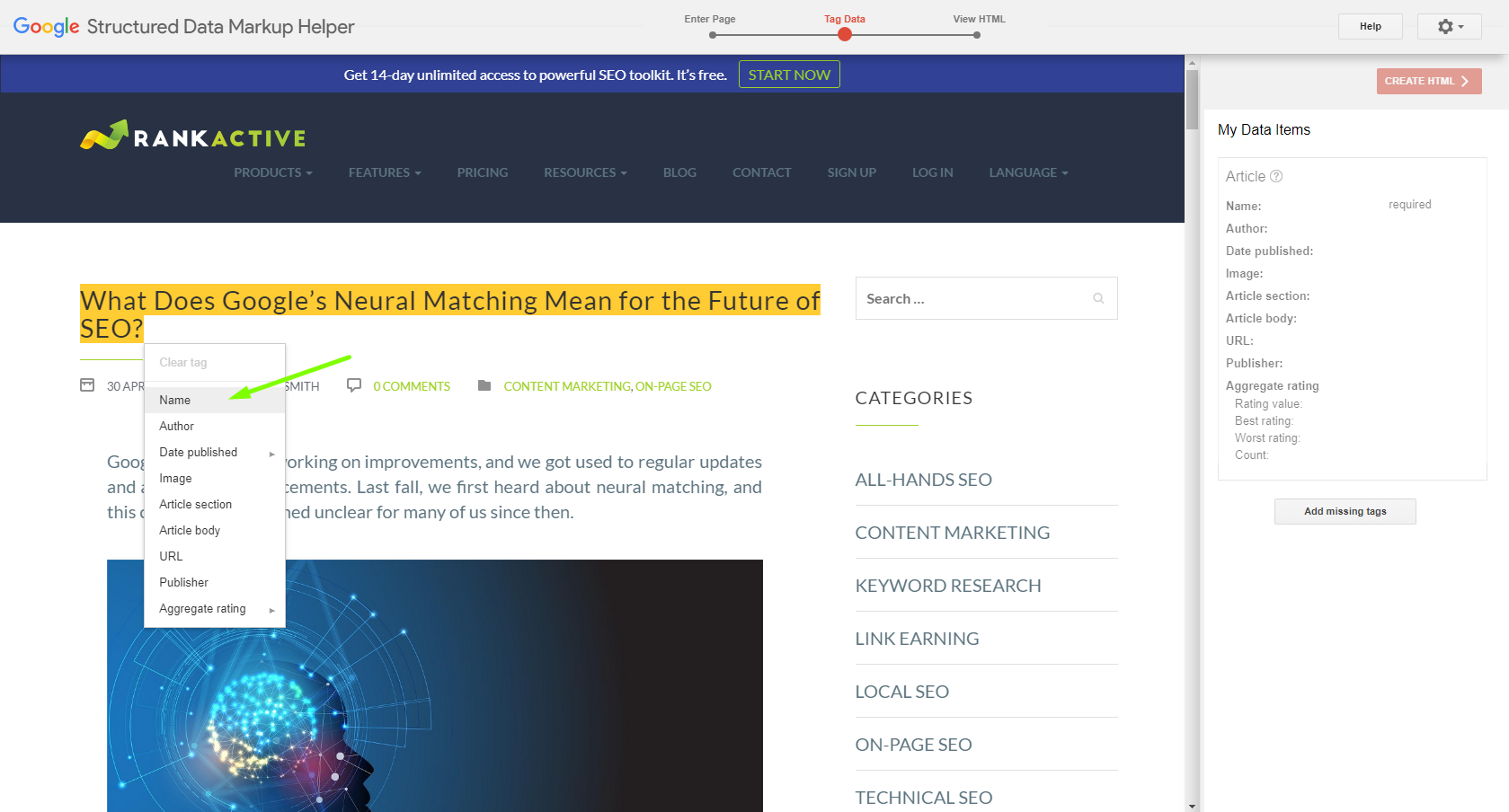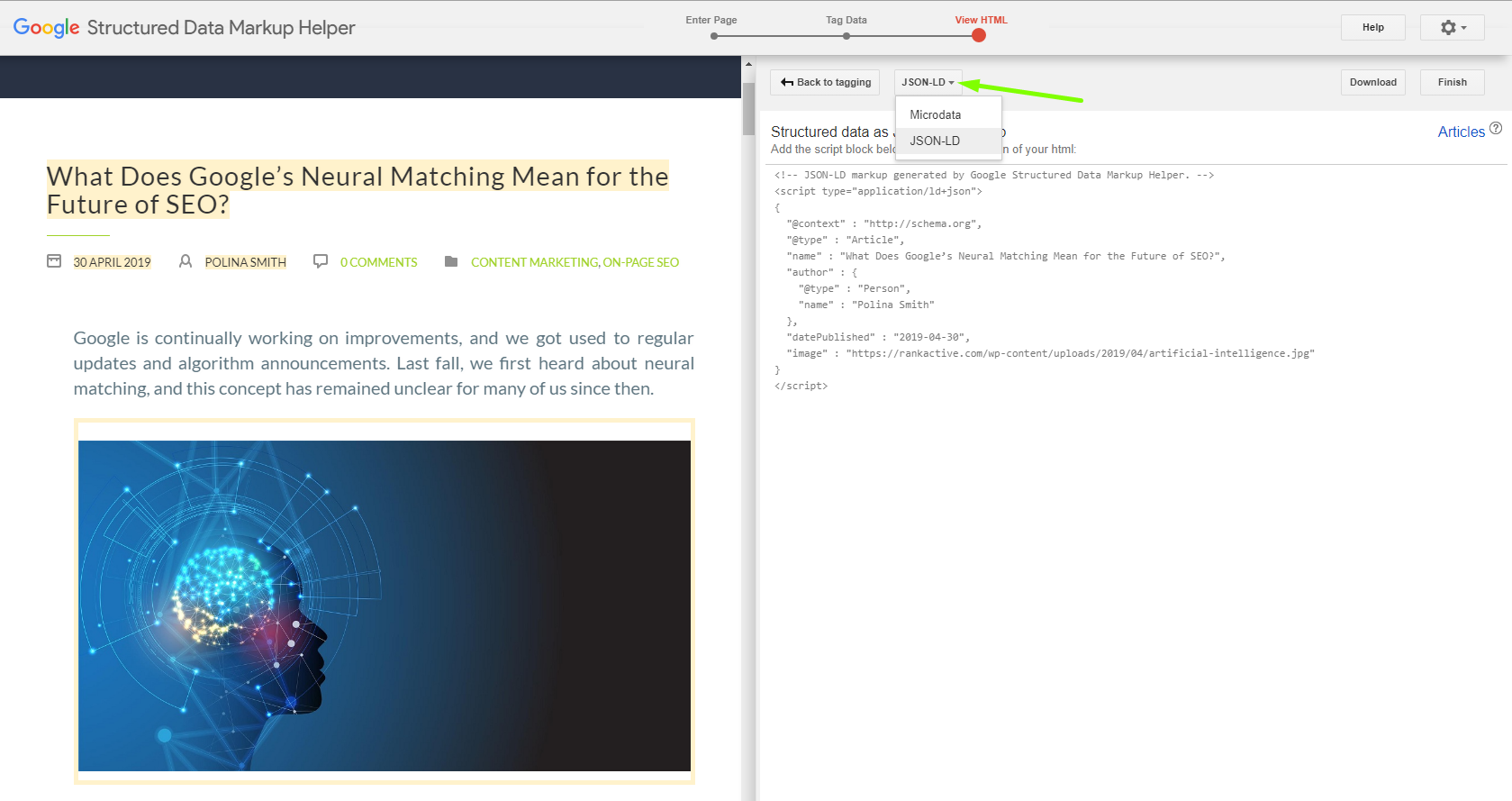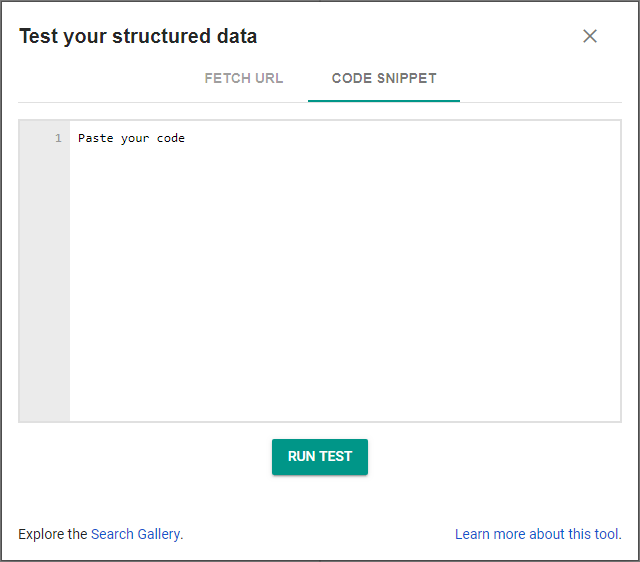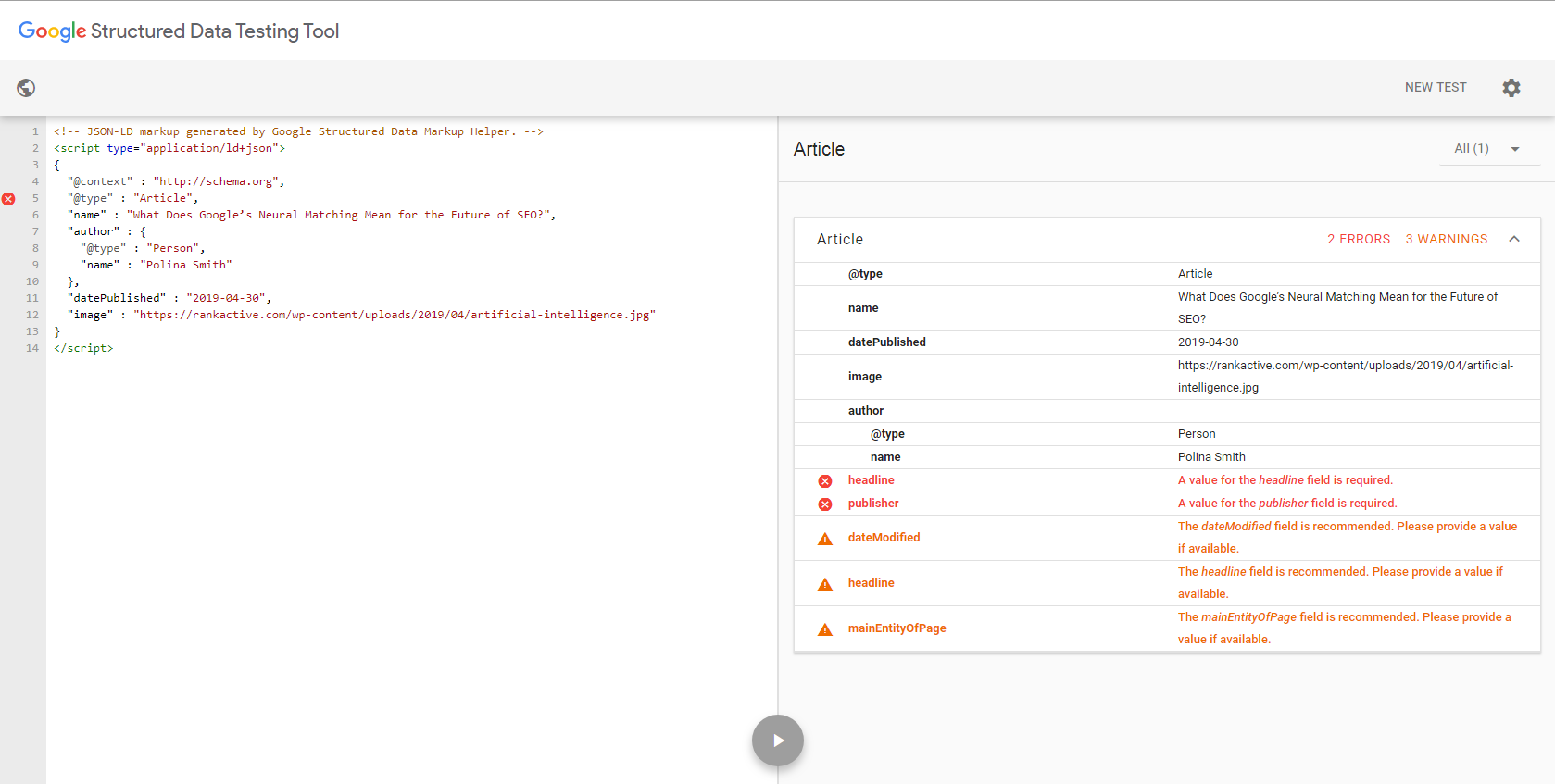Everything You Need to Know About Structured Data Markup
3 May 2019 Leave a comment ALL-HANDS SEO
What web development skills do you have? Maybe, you’re not a technical person at all, but you do need some technical help to boost your SEO efforts. Adding structured data to the website is one of those situations.
The “structured data” term appeared in 2011, and yet it confuses both SEO experts and entrepreneurs. So what’s the deal? Why should you learn more about it? We’ve decided to share our thoughts and knowledge on this subject with you. All the vital data is at your fingertips: what structured data is, how it helps SEO, and how to add it to your website.
What Is Structured Data?
When we think about structured data, we imagine some well-organized information. Let’s say you have to work with piles of documents. Each document has its name, purpose, date, and responsible parties. How to keep it in order? You would create a spreadsheet where you put the essential information into rows and columns. You’ve just created a structure to ease your work and quickly find what you need.
Structured data in terms of SEO has the same idea. Initially, Google, Bing, and Yahoo (Yandex joined a few months later) worked collaboratively to create standard rules to provide more details on the website’s content. The result of their collaboration is the Schema project.
The project’s community both creates and promotes schemas for structured data. Schemas can be built on the websites, in emails, and other localities. Schema’s vocabulary supports several formats of structured data, such as RDFa, Microdata, and JSON-LD. Currently, millions of websites use Schema.org to set their data in order.
Structured data allows search engines to understand your content better and present the most important information in SERPs. The search results become more accurate, and the websites’ content appears in rich snippets, video carousels, etc.
It’s just a quick structured data example. As you can see, website navigation becomes easier not only for a search engine but also for users. They can appear on one of the website’s pages or conduct a quote search right from the SERPs.
5 Common Uses of Structured Data
We’ve shown you only one example of how structured data may look like. But it has way more opportunities for your business. We’ll review five of the most common use cases.
1. Knowledge Panel
This is all the information presented on the right in Google search results. If you have Google My Business account, then you perfectly understand what we’re talking about. The knowledge panel contains the brand’s name, logo, description, location, contact information, working hours, etc. Google uses structured data to display information in a particular order.
If it’s an international business, then the Knowledge panel looks similar to this:
2. Rich Snippets
If you run a blog or an e-commerce business, structured data is the best way to tell more about your content from the SERPs page.
Several types of content that can enrich your web pages:
- Products
- Articles
- Videos
- Recipes
- Ratings, etc.
This is an example for recipes. Users can see the dish picture as well as its rating, cooking duration, and calorific value.
Here’s another example of results with ratings. It is helpful if you run a review website or an online shop with the products’ ratings.
There are more and more opportunities to add different types of information to search results. And we all should agree that results with additional information are more tempting to click on.
3. Carousels on Mobile
As Google has focused on mobile-first indexing, more and more websites choose AMP (Accelerated Mobile Pages) optimization. AMP is a library released by Google in 2015 which allows developers to create instantly-loading mobile pages.
But note that you should create a separate markup for AMP. As soon as you do it, your website will appear in rich results such as Top Carousel, and you’ll have an opportunity to elevate your conversion rates.
4. AdWords
If you have a plan to launch an AdWords campaign, consider using structured snippet extensions. It also provides more information about your business right from the search results page. When you invest money in advertising, you have to be sure web users will get all the relevant information.
In this example, users can go to a specific website page or choose a hotel according to a price range.
5. Email Marketing
Email marketing is on top at the moment. According to DMA, £1 spent on email marketing returns £32. And this metrics is rising because the return was £30 as of 2016.
It’s not surprising Google offers some help in terms of structured data in Gmail. For example, you might have seen an order information box in the letter from Amazon or flight details in the airline’s letter:
Google provides you with a helpful guideline if you want to put some effort into your email marketing strategy.
Today, we’d like to draw your attention to rich search results. As you’ve noticed, this structured data option is very versatile and gives you the best opportunity to attract potential leads. But how to start using this opportunity? We’re here to show you fast and straightforward options.
How to Add Structured Data with a WordPress Plugin
WordPress is the most popular CMS in the world, so there’s a big chance you use it too. It means you already know how much power you get with plugins provided by the CMS platform, and it includes adding structured data with little technical knowledge.
We’re using Schema App Structured Data plugin as an example.
1. You should download the plugin first. To upload it to your website, go to the Plugins subsection and pick the Add New option. Then, you have to choose a file (an archive with the plugin) and click on Install Now. After that, you can continue by clicking on the Activate Plugin button. That’s all for the installation process.
2. Now when you create or edit any web page from your site, you’ll find an area below with the title “Schema App Structured Data”. The plugin chooses the best structured data variation for a particular page. Only if you want to add changes, there’s the pencil icon to dive into the code. In this case, you may need some help from a developer.
And this is how the plugin’s editor looks like:
That’s all you should know to start your structured data adventure if your website is built on WordPress. What if you’re using a custom CMS? As always, Google lends a helping hand.
How to Add Structured Data Using Google’s Helper
Google has a tool in its stock called Structured Data Markup Helper. As rich results become more popular, this tool becomes a magic wand for SEO experts, marketers, and business owners.
1. Let’s begin with reviewing a starting page. Here you can choose either the Website or Email tab. It means right from this window you can optimize both emails and website pages. Today, we’re interested in the Website tab. Here you can look through the list of web page options where structured data can be added.
2. As you’ve noticed, we’ve already added a link to one of the articles on our blog to continue working with it. You should do the same (or add an HTML code) and pick your content’s category. In our case, it’s Articles. Then, click on Start Tagging.
3. On the next page, you’ll see your content, and there is a bar with data items on the right. Google has templates for each content category. So, a template for articles looks like this:
4. To start filling in this area, highlight a piece of data in your content, then pick a category from the list. We’re starting with the name, so we highlight our article’s title and click on Name. Then, this information automatically appears on the right.
5. Let’s continue by filling in some more items. We’ve highlighted the author, date published, and image. This is how it looks like in the end.
No matter what category you’ve chosen at the beginning, the tagging process is pretty much the same. The more elements you eventually mark up, the better Google will crawl the information you’ve provided.
6. Once you’re sure you’re done on this page, click on the Create HTML button. Next, you will see how your code looks like. Make sure there is a JSON-LD option picked above – Google recommends using this format.
Next, you should download the HTML file and paste it into your website’s source code. It’s better to ask the developer’s advice when you do it for the first time. You’ll have to delete the old code and paste the new one. Some assistance at the beginning will help you avoid any mess on the website.
How to Test the Structured Data Code?
We highly recommend you test an HTML code before publishing it. And Google has another helping instrument to do that. Structured Data Testing Tool checks either a URL or a code for accuracy. We click on the code option:
The tool provides a list of errors and warnings for you to consider. You can get back to Structured Data Markup Helper or make minor changes right in the code.
That’s all you should know to add structured data to your website and eventually make the web pages appear in search results.
More Structure – More Leads
Adding structured data to your website won’t pass unnoticed: on the one hand, search engines can better understand your content, on the other, web users get more information right from the SERPs. Who would ignore this opportunity?
To make things easier, Google has developed tools to both create and test structured data. Step by step, you can build up an HTML code without any technical background – it’s great timing to enrich your SEO strategy.
Tags: Google, Rich snippets, Schema, Structured data, WordPress
Like this article? There’s more where that came from.
- 5 Questions to Ask Yourself Before Paying for Rank Tracking Software
- 5 Serious Mistakes Beginner SEOs Make and How to Fix Them
- Why We Use Google’s New Link Attributes and You Should Too
- Title and Description in 2021: Why Google Rewrites SEOs’ Meta Tags
- What We Should Learn From Google’s “About This Result” Feature



